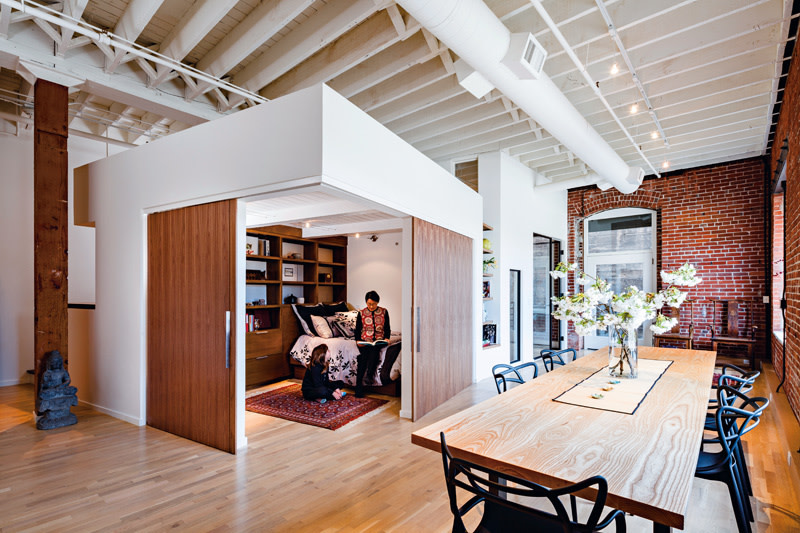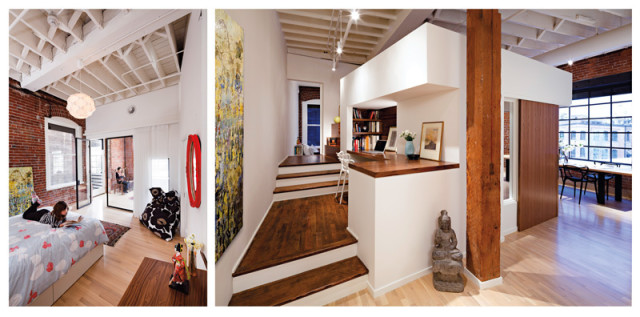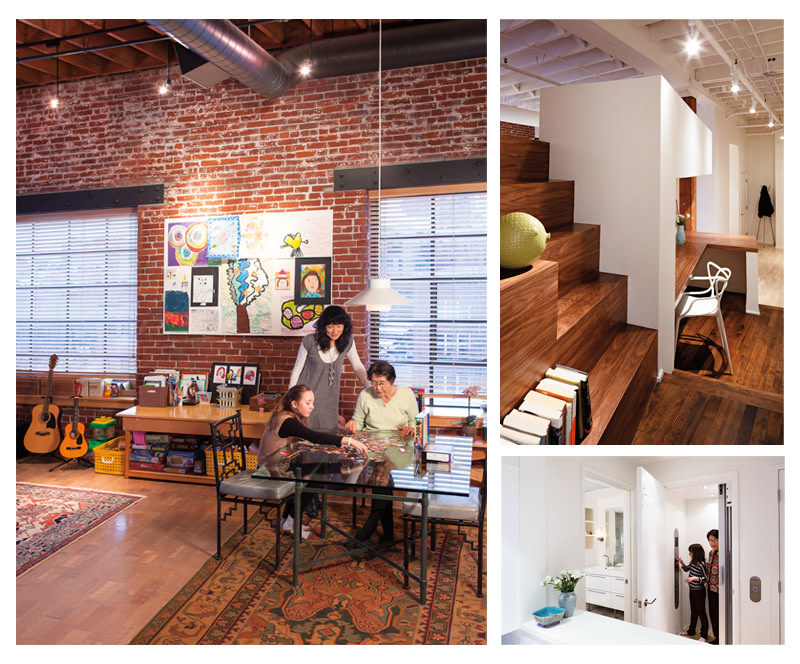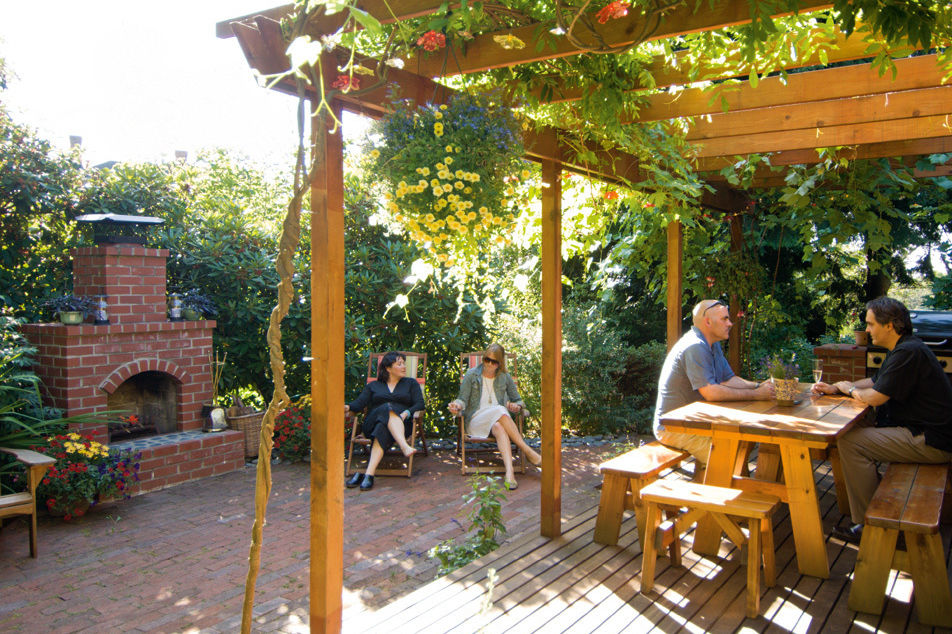Reimagining Modern Loft Living

Image: Lincoln Barbour
Swan Paik’s Pearl District penthouse’s brick-lined walls stretch two stories high, with sightlines through 10-foot windows that draw in the twinkling buildings outside like part of the furniture. It’s a lovely setting, but hardly a cozy domestic tableau. When Paik, a director at Nike, bought the place 11 years ago, it was fine. She yearned for the feel of her hometown of New York, she says, for “an old industrial warehouse converted to living space.”
Soon after moving in, Paik became pregnant with Grace, and in the tradition of her Korean background, Paik’s mother, Isabelle, retired from New York City to help raise the baby. Though Isabelle was no stranger to urban living, the 1,900-square-foot one-bedroom loft’s open floorplan felt odd. “When I first got here, I asked, ‘How can you live in such a big space, or sleep without closing a door?’” she recalls. To create some privacy, Paik got a handy uncle to build two small bedrooms, one atop the other. Tucked into the back of the living room, with frosted plexiglass sliding doors, this box served as sleeping quarters for Isabelle and Grace.

The renovated downstairs apartment creates a series of intimate spaces that gracefully intersect, from Isabelle’s “jewel box” of a bedroom (above) to Grace’s colorful kid space (left) to the shared office and dining spaces (right) that connect the bedrooms.
Image: Lincoln Barbour
In the years since, the three generations lived happily under the one soaring ceiling. But with Grace, now 9, growing up and the addition of Paik’s partner, Rod Ewald, to the household, they needed more space. So Paik bought the 1,200-square-foot rental apartment below theirs and tapped Portland firm Dangermond Keane Architecture to create sophisticated new quarters for Grace and Isabelle while still keeping the feeling of one family together.

An elevator (bottom right, Barbour) lets Isabelle and Grace whisk from their modernist surroundings downstairs (top right, Barbour) to the main family space upstairs (left, Mullenberg), where Grace’s paintings, projects, and games decorate the loft.
Image: Lincoln Barbour,Stuart Mullenberg
Isabelle and Grace are close: Grace calls her grandmother “Mama” and her mother “Mommy.” So the question became, says Christopher Keane, a principal at the firm, “How do we create a space where Isabelle is in the center that also allows Grace to have free rein?” At the same time, the architects didn’t want to ruin the grand volume by chopping it up with walls.
The solution is both original and elegant. “What we ended up with is a jewel box for Isabelle that everything revolves around,” Keane says. The grandmother’s bedroom is set in the middle of the new space, slightly offset to preserve views of outside, with a lowered ceiling and intimate dimensions. Walnut steps lead to an interior balcony set directly above Isabelle’s room, which shares a wall with Grace’s bedroom at the back of the loft. A small sitting room, kitchen, and dining room fill out the rest.
“The space is active and kinetic, like a kid, while also being refined and thoughtful, like someone of Isabelle’s age,” Keane says. Though there are few walls, sliding doors and windows allow Grace and Isabelle to completely open up the space, or they can pull them closed for privacy. The palette is modern and minimal, with white walls, natural woods, and exposed brick surfaces. And as Paik notes with a laugh, “Grace fills a space with her personality, so that’s a lot of color right there.”
Connected to the rest of the house by an elevator, the new downstairs has become a natural extension of Paik’s original loft. Once a kind of stylish urban bachelorette pad, the home now revolves around family. On a winter night, Grace appears upstairs to join her mother for a lively round of Monopoly. Spicy hints of kimchi and Korean chapchae waft through the open space, and Isabelle floats between the kitchen and the game while Ewald strums one of his guitars from a perch on the couch. “We wanted a place where we could work and play and not be separate,” Paik says. “This was our opportunity to acquire more space and create something unique in the Pearl—and still all feel harmonious.”




